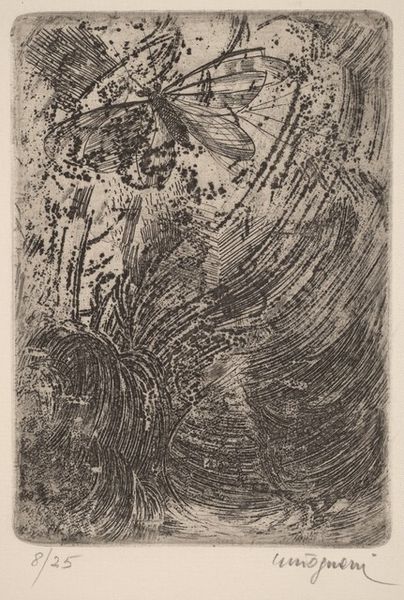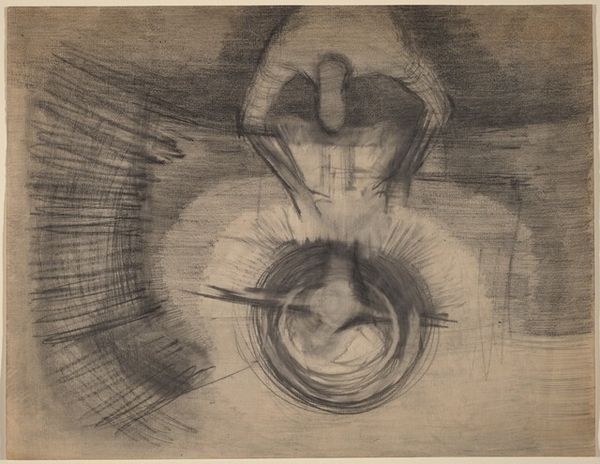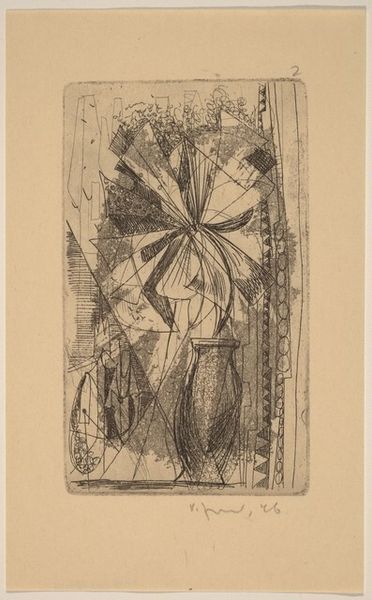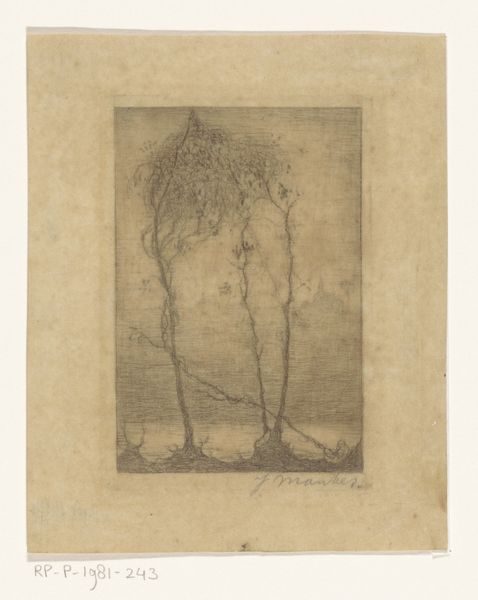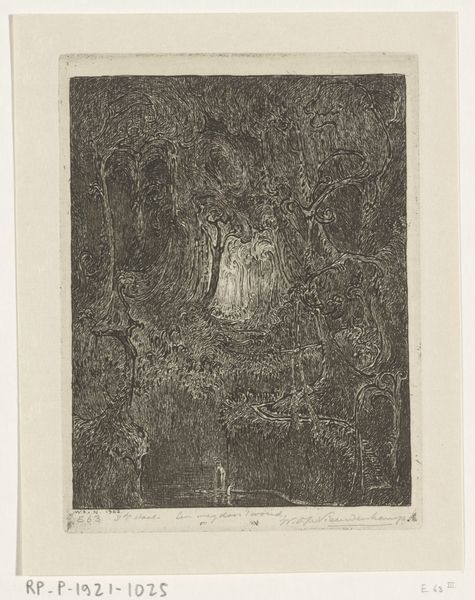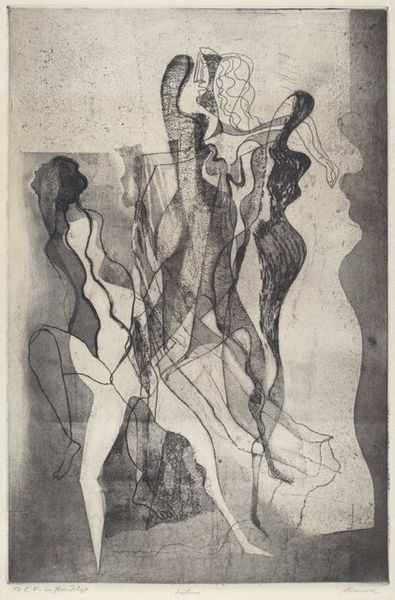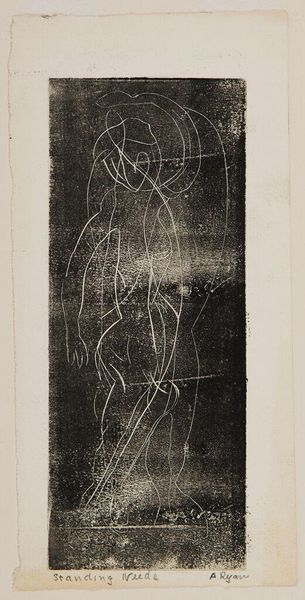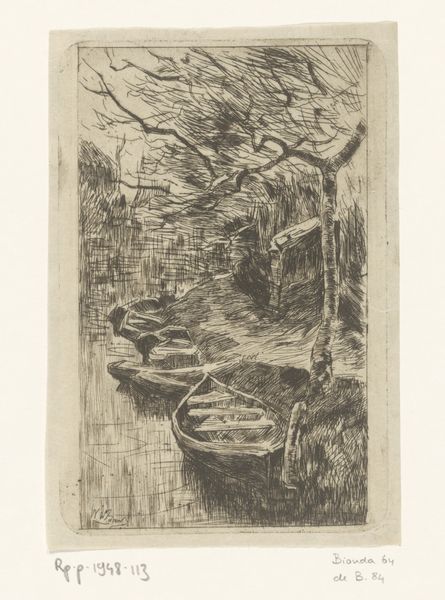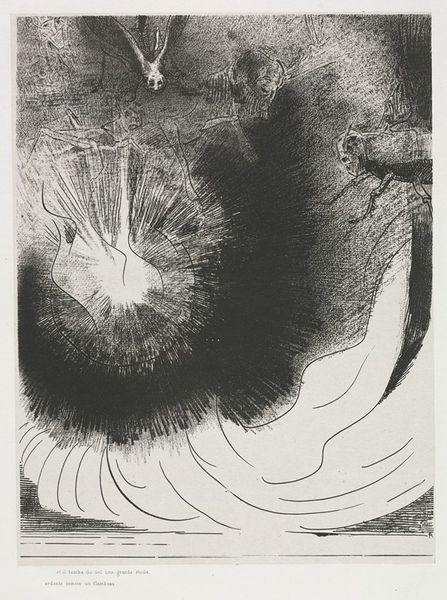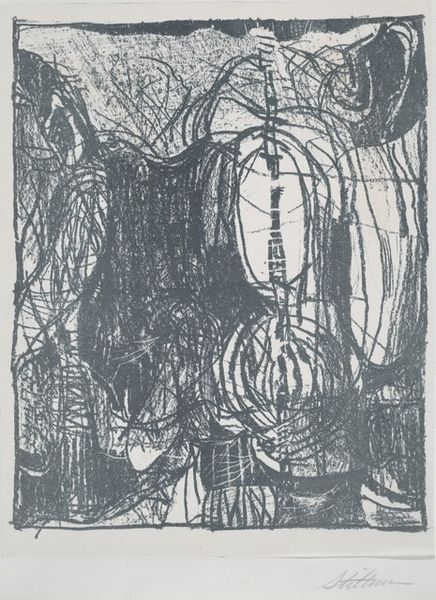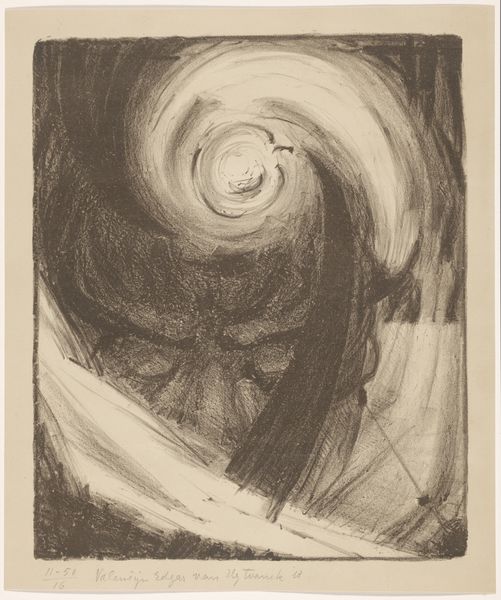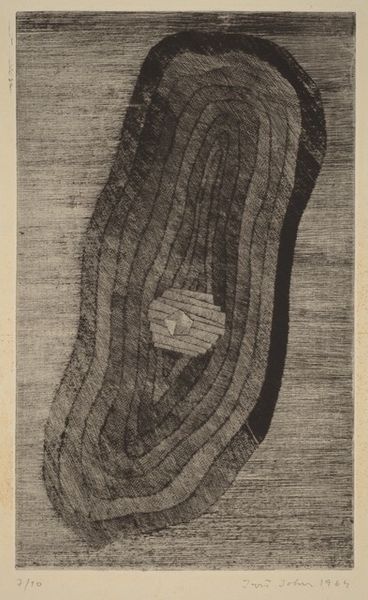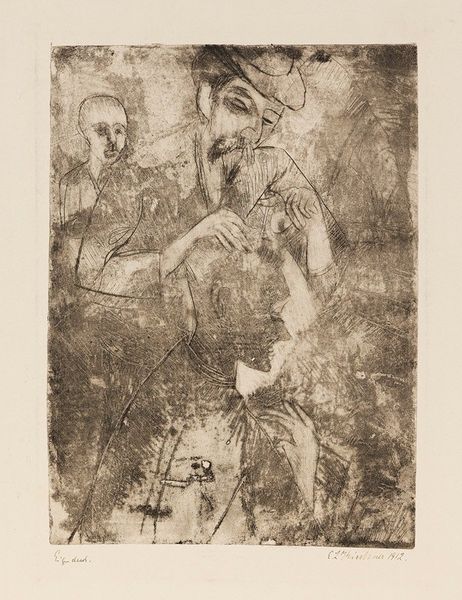
drawing, print, etching, paper, ink
#
portrait
#
drawing
# print
#
etching
#
etching
#
paper
#
ink
#
linocut print
#
symbolism
Copyright: Public Domain: Artvee
Editor: This is Richard Roland Holst's "Mélisande bekijkt haar in het water gevallen ring 2," created in 1892. It's an etching, so we have ink on paper. There’s such a delicate, almost dreamlike quality to it. I'm intrigued by the heavy use of line and the figure's placement above the water... it feels very symbolic. How do you interpret this work through a formal lens? Curator: The composition is remarkably vertical, directing the viewer’s eye from the ethereal figure of Mélisande down into the watery depths. Roland Holst’s mastery of line becomes immediately apparent; notice the fineness and control used to render the figure, juxtaposed with the much denser and almost chaotic linework describing the water. Editor: It's almost like two separate artworks joined in one frame! Curator: Precisely. And it is that contrast which animates our reading of the symbolism here. Consider how the surface above possesses more figurative elements while a near abstraction unfolds in the depths, all but concealing the lost ring itself. This visual split reinforces a central thematic idea: loss or unrealizability. Editor: Unrealizability because it looks like two faces, very faded, can be seen in the middle of the water? Curator: Quite right, there's some faint shapes emerging from the composition, but that the composition stays in that unfixed state matters more than what you find, that might point to the viewer´s subjectivity in deciphering meaning. How does the work´s commitment to fine, dark lines that run vertically along the scene, affect the symbolism of loss that the artwork aims for? Editor: So, it seems the artist’s intentional use of line, contrasting textures, and a split composition guides the viewer toward an understanding of unrealizability...fascinating. It definitely adds to the overall atmosphere of the scene. Thank you! Curator: Indeed. Close attention to these formal elements provides a deeper appreciation of the conceptual depth.
Comments
No comments
Be the first to comment and join the conversation on the ultimate creative platform.
